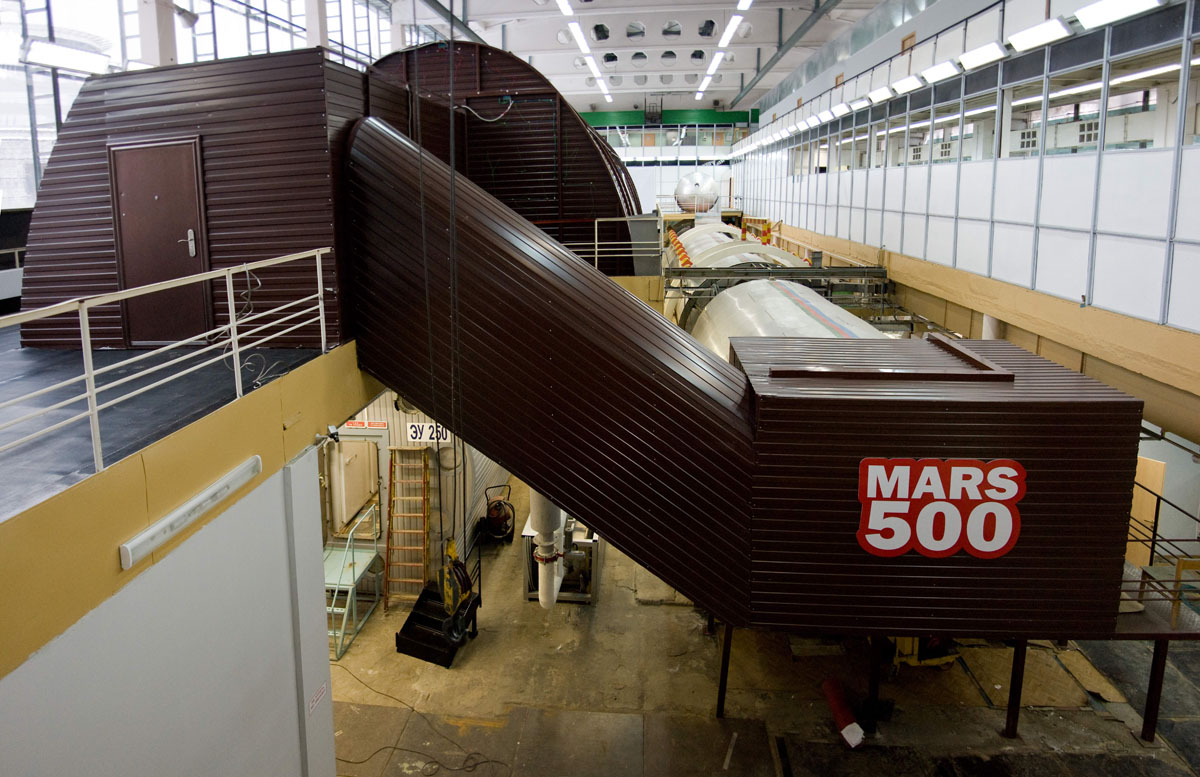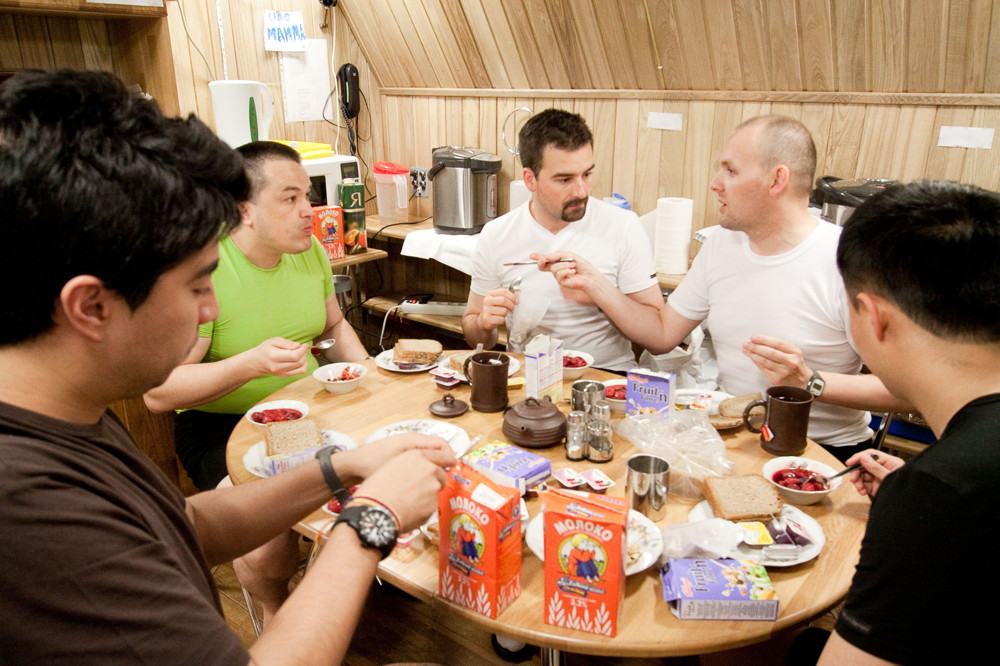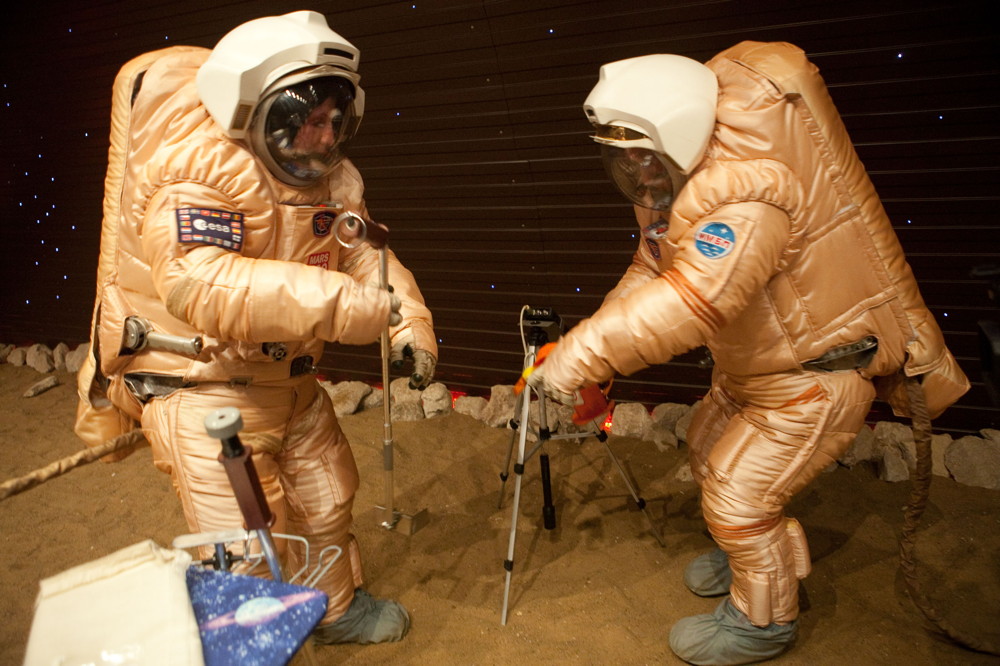Volunteer Astronauts 'Return' Home This Week After Mock Mars Mission

After spending nearly a year-and-a-half isolated from the rest of the world on a simulated mission to Mars, six volunteer astronauts are set to "return" home to Earth this week.
The hatch of the spacecraft, which is really an isolation facility housed at the Russian Institute for Biomedical Problems in Moscow, will be opened on Nov. 4 for the first time since June 2010, when the six-person crew embarked on their mock 520-day journey to the Red Planet and back.
"At last the countdown embodies the feeling that was constantly growing throughout October: the end is close!" French engineer Romain Charles, one of the participants of the Mars500 project, wrote in a recent public diary entry. "Our international crew went through the Mars500 mission successfully and we're happy and proud to answer positively to the question asked one year and a half ago: 'Is Man able to endure, physiologically and psychologically, the confinement of a trip to Mars?' Yes, we're ready to go!"
For those who have been overseeing the lengthy project, the impending end of the mission is somewhat surreal.
"I don't know about the guys inside, but for us on the outside, looking back, it seems like it wasn't that long ago since they started," said European astronaut Christer Fuglesang, who heads the science and application division at the Directorate of Human Spaceflight and Operations at the European Space Agency (ESA). [Mars500: Photos From Russia's Mock Mars Mission]

Mission to Mars
The Mars500 project is being conducted by ESA and Russia's Institute of Biomedical Problems. The experiment, which reportedly cost $15 million, aims to simulate a complete manned mission to Mars from beginning to end. Researchers hope to use data collected during the mock expedition to better understand the physical and psychological challenges that astronauts will face on real deep space missions.
Get the Space.com Newsletter
Breaking space news, the latest updates on rocket launches, skywatching events and more!
"The length of Mars500 is unique — there has never been such a long isolation before, so that gives you unique data," Fuglesang told SPACE.com. "From a logistics and communications point of view, it was quite realistic. Of course, there are certain aspects that you cannot simulate. You cannot simulate weightlessness or radiation, for example."
Over the course of the 17-month simulation, the crewmembers performed experiments and even conducted mock "Mars walks" on the surface of the fake Red Planet. The participants also monitored their own wellbeing and collected data from brain and body scans throughout the mission.
The various tests have already yielded valuable results.
"[T]he scientists have already highlighted the importance of their investigations for terrestrial medical issues," Patrik Sundblad, a human life sciences specialist at ESA, said in a statement. "Yes, the crew can survive the inevitable isolation that is for a mission to Mars and back. Psychologically, we can do it."

But, that doesn't mean there won't be challenges along the way, Sundblad said. By carefully monitoring the Mars500 participants over the entire course of their journey, researchers can determine when during long-duration spaceflights people struggle most, and devise ways for mission controllers to help astronauts cope.
"They have had their ups and downs, but these were to be expected," Sundblad said. "August was the mental low point: it was the most monotonous phase of the mission, their friends and families were on vacation and didn't send so many messages, and there was also little variation in food."
This type of fatigue in the third quarter of a long mission is something that psychologists have studied before.
"In general, it is known that if you have a long mission, the third quarter is toughest," Fuglesang said. "You've done most of the exciting things, you're just coming home and there's nothing really exciting happening anymore. With Mars500, from August to September, it was maybe a bit harder for them to endure, but that's completely normal."
A valuable simulation
Still, the architects of the Mars500 project say the entire experiment has already exceeded their expectations.
"So far, it has been very good," Fuglesang said. "We didn't have any kind of hiccup or crisis inside. If you look at the data carefully, the mood goes up and down, but really they have been performing extremely well. I did not expect anything major, but it's still been going even better than I could hope for. I'm astonished." [Video: 250 Days In, How is the Mars500 Crew?]

To make the simulation realistic, the crew experienced delayed communication with mission controllers at certain points during the journey, much like astronauts would encounter on a real flight to Mars.
"The high fidelity of the simulation has been an important factor in the success of the experiment," Sundblad said. "Simulating a real mission to Mars as closely as is possible on Earth has been very important for the crew."
The diverse Mars500 crew is made up of Charles, Italian engineer Diego Urbina, Russian physiologist Alexandr Smoleevski, Russian surgeon Sukhrob Kamolov, Russian engineer Alexey Sitev and Chinese astronaut trainer Wang Yue.
After the hatch is opened, the Mars500 crew will remain in medical quarantine for at least three days, where they will undergo additional analysis, Fuglesang said. Researchers are eager to comb through all the measurements, which should help scientists decide what kind of follow-up experiments to perform.
"It will take about a year before scientists really get control of the data and get conclusions," Fuglesang said. "At that point, we intend to have a meeting to present the data. We definitely need to see how to continue and are already asking about future plans. We don't have a clear plan right now of what will be the next step of how to build upon this, but it's something to discuss when we get more results. We need to see what questions come up from these results and what investigations we should do now."
You can follow SPACE.com staff writer Denise Chow on Twitter @denisechow. Follow SPACE.com for the latest in space science and exploration news on Twitter @Spacedotcom and on Facebook.
Join our Space Forums to keep talking space on the latest missions, night sky and more! And if you have a news tip, correction or comment, let us know at: community@space.com.

Denise Chow is a former Space.com staff writer who then worked as assistant managing editor at Live Science before moving to NBC News as a science reporter, where she focuses on general science and climate change. She spent two years with Space.com, writing about rocket launches and covering NASA's final three space shuttle missions, before joining the Live Science team in 2013. A Canadian transplant, Denise has a bachelor's degree from the University of Toronto, and a master's degree in journalism from New York University. At NBC News, Denise covers general science and climate change.









